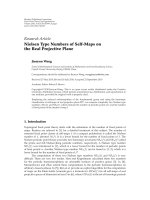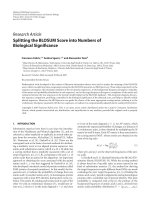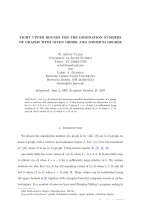The graphs below show the numbers of male and female workers in 1975 and 1995 in several employment sectors of the republic of Freedonia
Bạn đang xem bản rút gọn của tài liệu. Xem và tải ngay bản đầy đủ của tài liệu tại đây (105.31 KB, 2 trang )
The graphs below show the numbers of male and female workers in 1975 and 1995 in several
employment sectors of the republic of Freedonia. Write a report for a university teacher
describing the information shown.
You should write at least 150 words.
You should spend about 20 minutes on this task.
model answer:
The two decades between 1975 and 1995 brought significant changes in the representation of
women in Freedonia's work force, according to the graphs. In 1975, for example, some 300 000
men and 250 000 women worked in the communications sector. Twenty years later, though the
number of men remained unchanged, the number of women rose to 550 000.
A similar situation was seen in the wholesale and retail trade sector, where the number of women
rose from about 550 000 in 1975 to almost 800 000 two decades later. The number of men in this
sector remained stable over the period, at around 700 000. Women also made gains in both the
finance/banking industries and in the defence-related public sector. Whereas some 125 000 women
worked in finance and banking institutions in 1975, the number increased to 450 000 by 1995. The
number of men grew only marginally from 425 000 to 480 000 over the same period. In defence,
the number of men declined from 225 000 to 200 000, while the number of women rose from 25
000 to over 100 000.
Two sectors that retained stable employment numbers for both men and women were
manufacturing, which had about 300 000 women and 650 000 men in both surveyed years, and the
public sector (non-defence), which employed 650 000 women and 850 000 men. Thus, women
appear to have made gains in the Freedonian work force but not at the expense of men.
(243 words)









